
Imagine bringing a beloved post-apocalyptic world to life from one of the best video games ever—it’s no small feat.
But HBO’s The Last of Us is doing it, in spectacular fashion, building upon original developer Neil Druckmann’s story with masterful writing (as always) from Craig Mazin, in addition to some beautiful production design from John Paino. And don’t get me started on the score by Gustavo Santaolalla or the performances from the entire cast.
In the reality of The Last of Us, time stops on Outbreak Day, Sept. 26, 2003. Those who aren’t devoured by violent, cordyceps-ravaged “infected” are left to piece together lives from the wreckage. Among them are Joel (Pedro Pascal), a bereaved father still coping with loss 20 years later, and Ellie (Bella Ramsey), an immune teen who perhaps holds the key to curing the world. These characters, thrown together, make their way from Boston’s quarantine zone into the western wilderness, where rebels, raiders, infected, and more waiting for them.
If you have somehow missed the deluge of stunning Pedro Pascal fan cams (bless you, internet creators) or the shared mourning of devastated viewers every Monday after a new episode airs, then please, do yourself a favor and get caught up on the show.
A huge part of the show’s impact is tied to its production design, which portrays places frozen in 2003 and slowly succumbing to nature. Locations for this world are not ones you can find and dress easily—which is where John Paino comes in.
The experienced production designer has worked on The Morning Show and Big Little Lies, both of which landed him Emmy nominations, as well as the atmospheric Sharp Objects. He has some experience with the apocalypse in The Leftovers, too.
We spoke with Paino after episode six, “Kin,” to learn more about how he and his team built over 90 sets in the city of Calgary to create a sense of lived-in, worn-down realism for the show.
Editor’s note: This interview has been edited for length and clarity.
No Film School: I’d love to know just a little bit more about, beyond the game, what your references were, and what some of the research you did for this looked like.
John Paino: Well, the world changes. Each episode we’re in a different place. They’re going across the country. So putting references together was a constant job. Certainly, when we started the show, I asked to see Naughty Dog’s references. I was familiar with the concept art for the game, which is beautiful but asking them for their references.
But a lot was similar to the references that I showed in the first meeting that I had with Craig [Mazin] about working on it. So it was a lot of, “What does the world look like after 20 years of civilization grinding to a halt?”
A lot of stuff of, what nature encroaching back on civilization in the form of buildings [looks like]—and also how would people learn or adapt to survive in these environments? I looked at a lot of references for displaced people because that’s what people would be. I looked at the Roma people who live in tenements in Europe. I looked at people living in Gaza. I looked at Jewish people before the Holocaust, and tenements and slums and squatters and all of that. We also looked at—because there’s a lot of people in paramilitary groups and things. So I looked at rebel soldiers, how they would survive, how they would make do? How do they make a cooking fire? A lot of that went into it. Also just how people would repurpose things.
In one of the first meetings I had with Craig, I showed him some pictures of chairs behind restaurants in this incredible photographic essay of these chairs. It’s a chair behind a restaurant. A guy comes out and has a smoke. You’re not going to go out and buy a new chair when it breaks or when it gets rained on. So they would take whatever’s in the alley and wire it to the broken legs and they’d use a traffic cone for the back of the seat and wrap baling wire around it. And he really loved those. They really hit a chord with him. So things like that and making a big library that we could always refer to when we wanted to flesh out a set.
NFS: You mentioned Craig Mazin. I’m also a big fan of his work. One thing that he always does so well as a writer is break things down into characters and relationships. I’m interested in how you take that and translate it into your design.
Paino: His scripts are very evocative and they’re very detailed-oriented. The script for episode three—which was just one of the best scripts I’ve ever read in my life—a lot of it’s there on the page. I mean, God, every page is, as far as the amount of detail, it’s like a chapter in Moby Dick. There’s so much in there and it’s so much part of [it] because a lot of this show is people going from one place to the other and walking and stepping, and everything has been, again, desiccated. It was a great blueprint.
Of course, we would do concept art for all of our sets. So we’d read the script, we’d have a page turn with him and talk to him about it, and we’d have meetings, and then we’d generate concept art. In that concept art, it should all be there, the textures and things or alluded to in the atmosphere. It’s also in the game’s concept art, too. So we would just go through that process. And then in the concept art, we’re always showing him textural references and stuff.
We had amazing art directors. The art directors would put together pages of samples of here is a brick wall, here is a brick wall in the QZ, here is a brick wall in Jackson. All of this would be put together—because all of our interiors, 95% of them are built. So all of that has to be shown to people, the craftsmen who are creating them. We always had these bibles and these textual references, some of which we recycled, but a lot of them were just for the different sets.
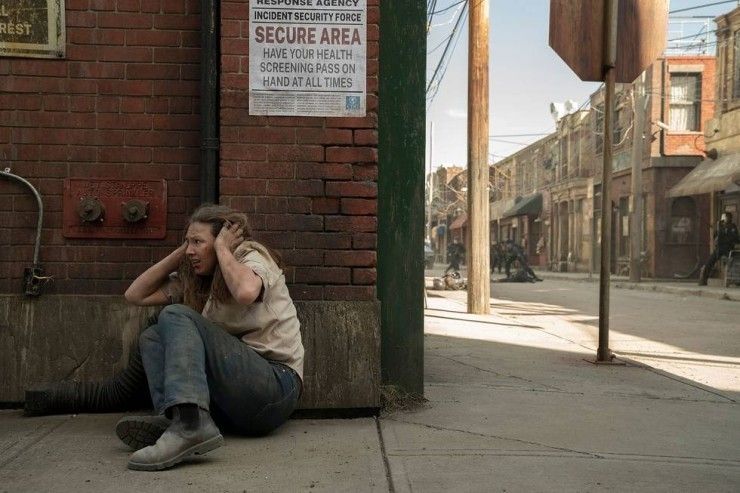
NFS: You’re touching on another thing that I want to ask about, which is—these characters are moving between different locations, times, and factions.
Paino: And weather too, in different parts of this. We shot it in Canada, but we wanted to feel they’re going through [seasons]. Even now, if you went to certain parts of the Rockies, there’d be snow on the ground, even in summer.
NFS: I’m sure you’re working pretty closely with Neil Druckmann and Craig in this process. How how do you create visual cues that are unique to each of those different factions?
Paino: That’s a challenge because we go into a lot of—usually it’s described in the script. This is so-and-so’s room, or this is this—they were in a bar or something like that. So again, it’s getting to the source material, looking at the water damage and things like that. If it wasn’t described, we always tried to come up with some backstory for the environment.
So it just isn’t all the same puddle. That’s there, but we always wanted to have some color or just some feeling of the past world because we’re always spraying things down. If we didn’t start with something behind them, it just would all be dark and black and we want to have a backstory.
The leader of the rebels in episode five goes back to her childhood home and talks about the room being the world. This is safe in here. We wanted to have something aspirational in the pattern of the wallpaper. We found this great kids’ wallpaper that showed the globe broken out into countries and things. It’s realistic. It’s not like you look at it and go, “Sure, this could be kids’ wallpaper.” It’s sad in one sense, but it also goes back to the story point of, this is the world that she wants to visit. This is the world that now will not exist, but it also refers to the bigger world outside the room that is scary.
We try to do things like that, and we try not to make them on the nose. Craig was always very cognitive of we don’t want to make “disaster porn” too much. Having worked on Chernobyl, we certainly were looking at that kind of decay and that level of disease, but also a sense of life in places. Let’s put them in a beauty parlor and have pictures of the models on the wall. That’s how we are contributing, aside from the obvious stuff of what we’re putting in their living spaces when necessary to show how they lived, how they make do and redo.
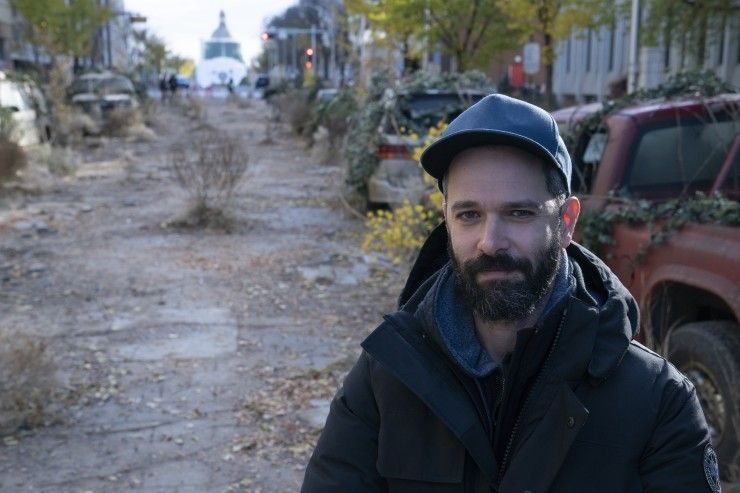
NFS: Yeah, that’s one of my favorite parts of the game, too, is so much character is in the locations. If you are looking, you can get a real sense of who was there.
Paino: Yeah. And in the scripts, there’s a lot of—not as much as in the game, obviously, but there is a lot of, “I need to do things to survive.” Right? I can’t go to the store and buy some food. I have to make it, or I have to have the raw materials for it. So, as you know, that harkens back a little bit to the game, that you have to complete tasks. We’re not completing it, but the materials are there.
NFS: Yeah.
Paino: But we have a lot of discussion about just about everything, all the props. The paper in the Fireflies’ headquarters, how it’s been reused and reused and reused and reused. So everything is important, discussed.
NFS: From a nerdy perspective, I’m interested in Easter eggs that you may have snuck in there. Is it episode three? I think there’s a safe combo on the wall.
Paino: Yeah, no, there’s a lot of things we try to think about.
NFS: Just wondering if there are any other Easter eggs like that maybe we haven’t found yet or can look for.
Paino: There are some in future episodes. We certainly tried to do—all the big Easter Eggs in the game are there, like Joel’s watch and all of those things are there, and some graphics and things like the Dawn of the Wolf poster that we tried to throw in wherever we could in the background.
It’s fun always to use those things, and you see them or don’t see. My attitude is better to have them than to not because when you’re designing sets and things, you don’t know what’s going to be shot and you also don’t know what’s going to make it into the final cut.
I’d say to filmmakers, don’t slather it all over the place, but if you spend time and money making these things, it’s okay to repeat them because they probably will never be seen too much.
NFS: I did notice in the last episode, that very iconic scene between Joel and Ellie where they’re fighting in the bedroom. That bedroom is very close to what the game setting was.
Paino: It was very close because everyone just loved it. Again, I think there were certain things that Neil and Craig felt we should stay close to the game. I mean, there’s a lot in the show that is not exactly like the game or even resembles the game, but there was a real wish to have that be very close. So that was their wish and that’s what we did.
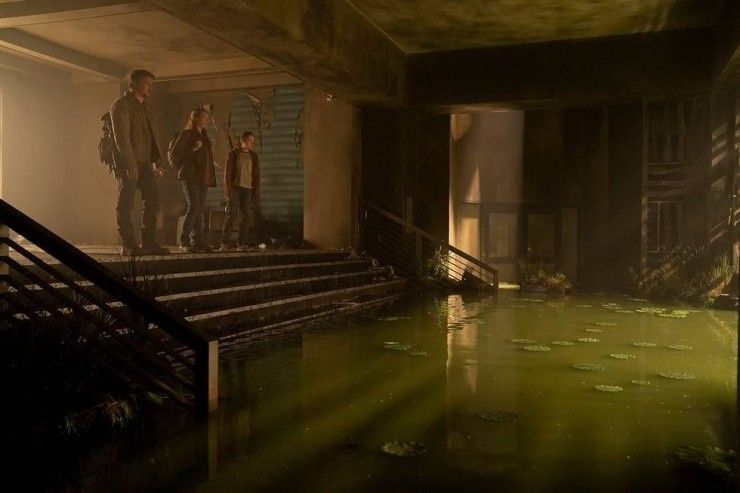
NFS: Is that how that process would go, if they came to you and said, “This is very important”?
Paino: Yeah, yeah, yeah. This show is interesting for me because in one sense it’s already designed, but it’s designed for a computer character to go along a path. When we design things for filming, we have a much bigger world to create, not only because the script is not an exact copy, and we want to flesh things out, and the directors may want to go over here or there, or it might be other things.
Or you go to a location that you’re dressing and you go, “Let’s embrace this thing or avoid it.” But also for camera angles, we’re always thinking about how something’s going to be shot and where the camera placement is, and creating the environment to see in front of it, which is not a prerequisite in the game.
The fact that one of the big things is like, yes, we have the game, but we have to translate that into the practical world and the mechanics of shooting. So to answer your question, in that case, there aren’t a lot of things that are exact copies, but that one, for some reason, they felt very strongly.

NFS: I think it’s close enough that fans of the game will be like, “Oh, I recognize this space.”
Paino: There are a hundred billion fans of the game, right? We want them to feel like we’re true to the subject matter, but we’re certainly not slaves to it because we’re as close as the scripts tell us we need to be. But we also have a lot of things where, again, we are shooting in a place, we have real people, and we have to make things safe. We have to deal with the camera and we have to open it up to be bigger than just where they walk.
NFS: I think one thing that I might be reading into is how the environment is not only changing with their journey, but I feel like it’s also changing with how Ellie and Joel’s relationship develops.
Paino: Well, I think collaboration is a very fluid thing. Each director comes in and they have things that they want to emphasize. And then the showrunner being Craig, and Neil, the creator—I think “reign in” is the wrong word, [they] just direct it and focus it.
We’re in a world without electricity. I think when we get outside, it probably feels a little more sentimental or just more, there’s hope. I mean, certainly, the thing about Jackson is that here is a place where people are making a safe haven. They are not trying to exploit each other. It’s not dog-eat-dog. This is a community where people worked and to do something better, and everyone lives in relative harmony.
It certainly appears that way, but I don’t know if it’s—I think it’s also just as you spend time with someone, you just get to know them more.
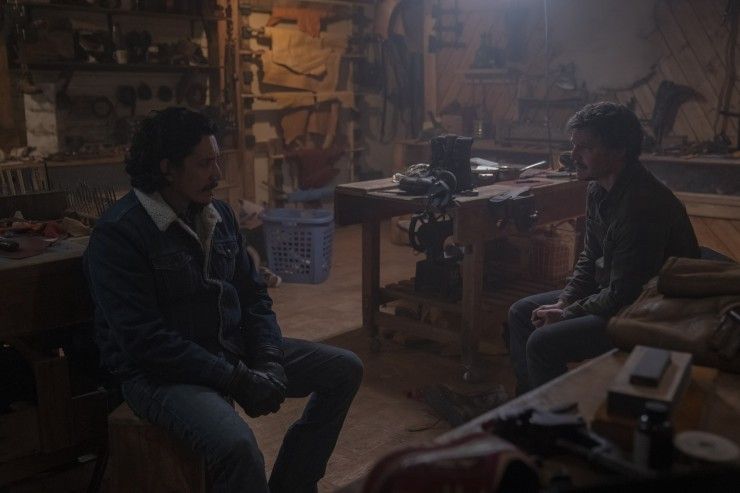
NFS: I did have a question about your use of brand names.
Paino: One of the great things about our show, as opposed to the game, is that we can actually use real names, and we try to whenever we could. That was really great and really important because we want the canon of the show to be as real as possible.
We never have the actors walking through volumes or green screen sets. Everything, even the location, is completely dressed out. That was a big help. So we were able to use Starbucks, we’re able to use real things, which is really good. I personally hate as a designer not being able to use the real trademarks in the names. And that helps the realism, which is great. It’s great to work with HBO because they embrace fair use and they have reasonable—
NFS: Clearances?
Paino: Yeah.
NFS: Is there anything strategic about how you chose those?
Paino: Again, it’s hard. When we were walking through Boston, we wanted to make sure our street signs and our—we use them subtly, you see them here, here, and there. It’s not beating you over the head.
I always think put it in there because we’re not on set. We don’t know what’s going to make it in or not, so it’s good to have it there. Right? You can’t regret something you never did. So it’s always good to have it there because it can always be taken out of the shot, or the camera can move over a little bit.
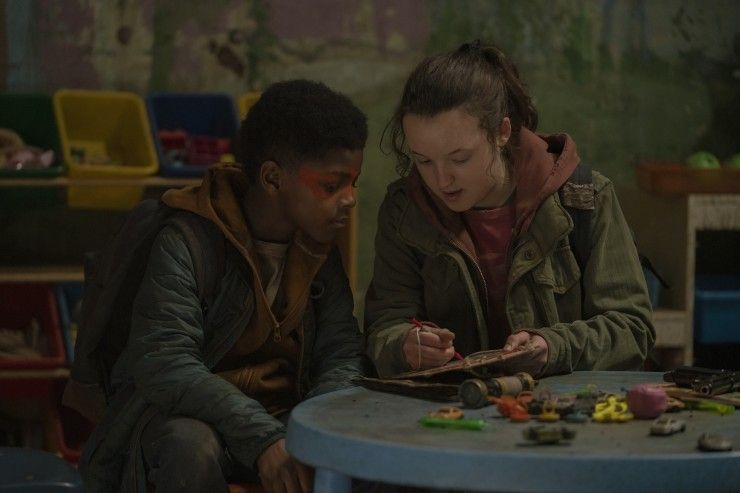
NFS: That’s good advice.
Paino: But it is a personal choice. Some directors want it to be really present and others want it to be present, but not too much. You certainly don’t want it distracting. You want it to just feel real.
NFS: I know that you’ve mentioned the difficulties that you had, especially in early episodes, with your trees.
Paino: Yeah. I have nothing against trees. I like trees. But if you saw a palm tree in New Jersey—with global warming and everything, maybe in 20 years they’ll be there. I mean, they’re invasive everywhere.
Yeah, no, I think it’s about the details and we want it to be realistic as possible.
NFS: Are there any other big things that you found a challenge?
Paino: Well, the challenge I think in Canada was, obviously, we had to build specific things like colonial architecture and the QZ. I thought there might be some liminal areas that were desiccated that we’d be able to embrace, and we didn’t really find anything like that.
So like in Children of Men, they shot in some waste areas and they incorporated those, and I was surprised there wasn’t a lot of that in Calgary, so that was always something. We didn’t have a place that we could run off to and build into, so we had to create it all. That was a challenge.
The weather is a challenge, too, because it snows quite a bit, and that was something to deal with.
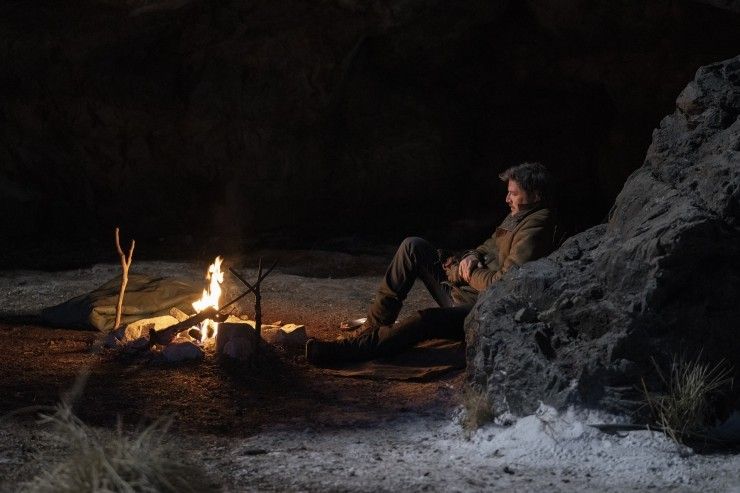
NFS: I know that you built so many sets, but I’m so grateful as a viewer that the whole team was willing to put in that amount of work because I think it is really paying off.
Paino: Yeah, no, I think it is too, and I think it gives the show sense of gravitas. It gives the actors something to react to and it becomes part of the story, which I think is in the game.
And it should be, to show the beauty and the terror. Ellie’s never lived outside of the QZ, so that was really great to try to give her something to react to.
NFS: Do you have any last bits of advice?
Paino: I just think to say to filmmakers, collaboration is important. So as a designer, it’s really good to learn how to get your ideas out there and get them in front of the DP and everybody so that you not only can help each other but also there’s so much lighting and technology now that’s a crossover with the art department. The art department is providing a lot more practical lighting and adding to the lighting of sets because of the digital platforms and the cameras.
So one of the things in film school, I don’t know if they teach it, but learning to collaborate and getting the DP and the costume designer on your side and all being in agreement is a really great thing for a successful project.














